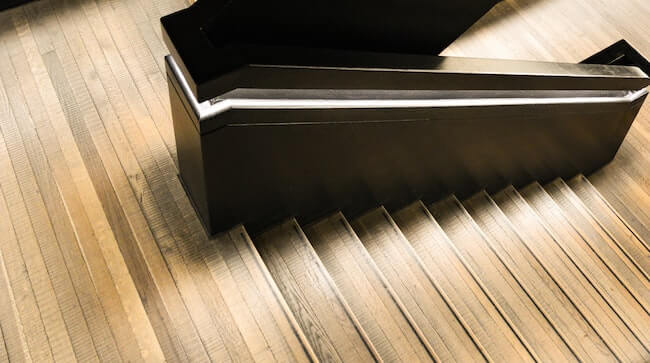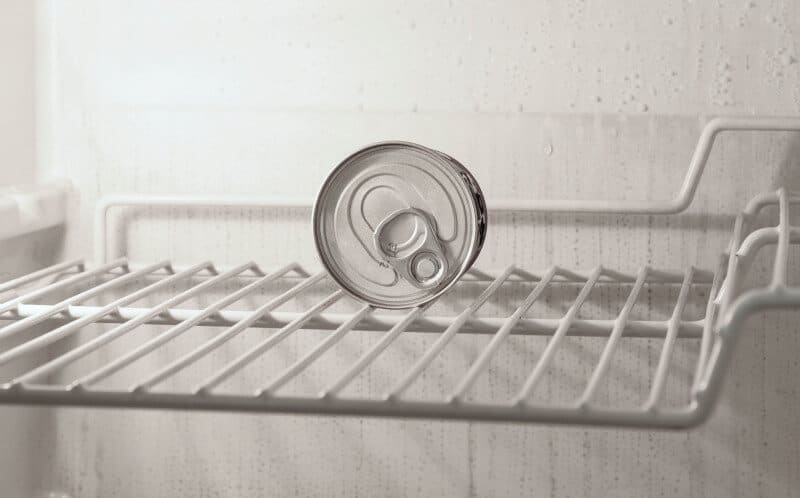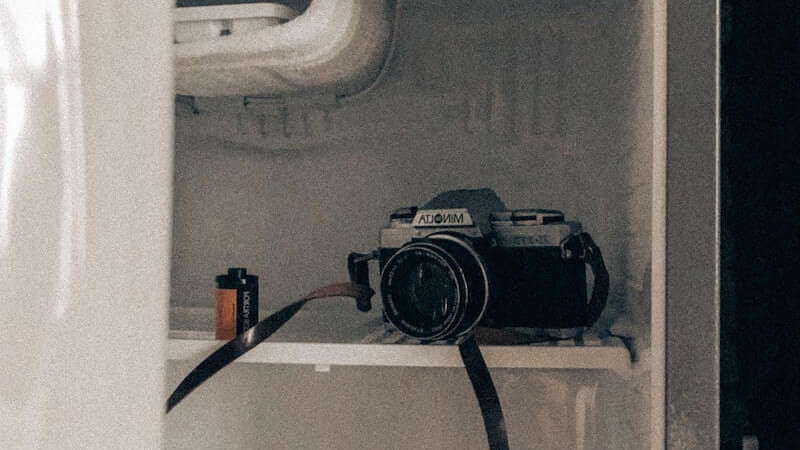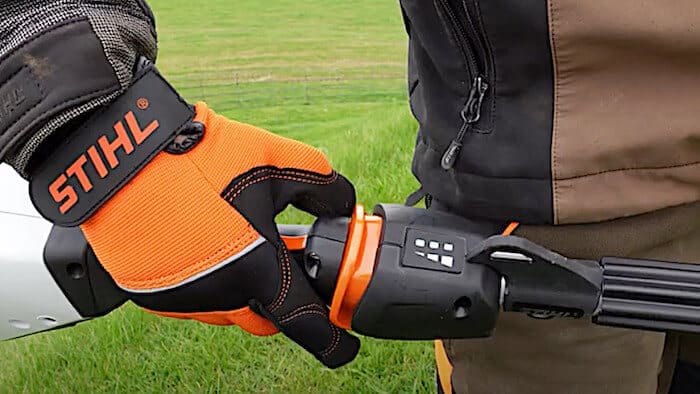
Vinyl flooring has become one of the go-to options for interior designers in recent years. It provides style and flexibility without spending a huge amount of money, each tile cost ranges between $1 and $3. These days there are so many options when it comes to textures and colors, that it’s easy to find the right fit for your home.
Some of these options are made to mimic the look of ceramic tiles, and they are often more durable. Vinyl flooring is also easier to clean and replace, making it a popular choice among the various flooring options available.
Check out our DIY friendly article about how to install vinyl flooring on stairs where we guide you through the installation process step by step.

“It’s worth noting, while vinyl tiles might add a pleasing aesthetic to your staircase, they might not provide the level of grip necessary for safe ascent and descent. Always prioritize safety over aesthetic appeal; your choice of flooring on stairs can be a critical factor in preventing slips and falls.”
Xwena Wray-Briggs, Interior Design Veteran
Is Vinyl Flooring The Best Material For Your Stairs?
If you are going to use vinyl flooring for your stairs, there are some positive and negative things you should know first. Some people love it because it is so easy to clean and care for. You can simply sweep it or mop it and it will look as good as new. Vinyl flooring is also very durable and can last for many years with proper care and maintenance.
Vinyl is a synthetic material created with ethylene and chlorine. When these 2 substances are combined, it forms a plastic resin also known as PVC.
The installation comes pretty easy as well, some times you don’t even need a professional, you can do it yourself.
But vinyl has some negative aspects as well. For one, it can be quite slippery, making it a less than ideal choice for areas that see a lot of foot traffic. It can also be susceptible to staining and discoloration over time.
Vinyl is very susceptible to some substances like bleach, muriatic acid, vinegar and paint. It can also be damaged by extreme sunlight exposure, sugary drinks spills and some heavy metals like lead.
How To Install Vinyl Tile Flooring On Stairs That Will Last For A Long Time
How should I replace my stairs? What is the best way to make them more comfortable to use? How to install vinyl tile flooring and what are some vinyl flooring options?
Although it may initially feel scary, installing vinyl tile flooring on staircases isn’t that difficult.
This product is designed to be installed by regular people with some common tools. These include a rubber mallet, a sharp cutter, a ruler and household cleaning products.
u003cpu003eTo install a vinyl tile on your floor you have to clean the subfloor from dirt and debris, plan out the project depending on your stairs layout, measure the size of the stairs with a ruler, cut the vinyl with a sharp cutter and carefully place the tiles on the floor so the glue sticks to the surface evenly. u003c/pu003e
We want to ease this process to see that it doesn’t take much to install vinyl flooring. Get started and learn how to build an easy DIY project without using harsh chemicals.
Prepare The Subfloor
If you want to install luxury vinyl, you must prepare stair steps and ensure that the subfloor and vinyl underlayment remain perfectly smooth to prevent bumps on your vinyl floor.
Ensure subfloor and surface are levels otherwise, vinyl will crack. You can seal the joints using caulking or covering screw screws. Also, thoroughly vacuum the floor before removing it so that nothing gets underneath the vinyl.
The excesses should be removed using the jigsaw then positioned on the raiser to fit the stairway nose.
Remove all existing molding materials and reassemble the baseboard to fit the stairway nose.
Although no special preparation is required, the flooring surfaces must be firmly set up so no debris can be found.
Generally, if you install vinyl for the first time, remove dirt or debris from the underlay and the tack strips. Mix water with one tablespoon of soap and clean the area with a sponge before the installation, this will ensure the vinyl sticks to the surface and no to the dirt, preventing bumps and bubbles.
Plan Out The Flooring Project
Plan a floor plan according to the type of vinyl; tiles or vinyl sheet flooring are planned for the staircase.
You should think about how to stagger laminate flooring to create an attractive pattern. Unless we take a more attentive approach, this project might become futile, so it requires careful planning.
You likely measured a vinyl floor layout that would fit in other areas, and certainly, you would have done this with the stairway. Maybe you’re looking at drafting a tonal design to see how to lay vinyl tile.
If you fail to plan, you could find some of the tiles stuck in the edges of stairways or lifting. By measuring and planning, you will place vinyl tile pieces in a way to avoid unwanted parts of your design.
Factor stair treads into your layout. Start with these and center them at your stairs. You could then cut pieces for other steps, so installing even tile will be easy for you.
Measure & Cut The Tiles
Make sure the stair tread and riser have the corresponding measurements. I prefer to cut the tiles to the desired size. You can use a ruler or a measuring tape and mark with a pencil where you have to make the cut.
You will need to measure the width and height of each step and then cut the luxury vinyl tiles to fit. You can leave 1/4 inch extra for the tiles that will be next to the wall and cut it out after the vinyl is set.
After you have the vinyl cut to size, you will need to start at the top of the stairs and work your way down.
If your product is leaking, double-check the size of your product before trimming it down.
If you are cutting large dimensions, it requires another cutting, which can endanger your vinyl project.
Install The Bottom Riser For Vinyl & Glue To The Sub Floor
Install a caulker gun over the top of the riser and apply the adhesive evenly over the base. Caulking seals any joints or covers screw positioned below. Put screwed in the corners of the screw for securement.
If the product peels off, peel off the vinyl tile protective layer to expose the adhesive and then lay it on the floor.
Alternatively, apply glue on the floor’s surface, working outward for the proper vinyl installation.
Start by climbing the bottom step and putting treads and risers on the corresponding staircases. When peeling and sticking vinyl, press it and smooth it to stop bubbles.
Start by applying adhesive to the step, and then place the vinyl tile on top. Use a rubber mallet to tap the tile into place.
Be sure to keep the tiles tightly together, and make sure that there is no construction adhesive showing on the top of the tile.
Let the newly installed tiles sit for at least one day, this will allow the vinyl to settle down and take its final shape.
The best wood replacement for your home
Are you considering installing vinyl flooring for your home’s stairs? If so, you’re making a smart flooring choice.
Vinyl tile is a durable, affordable flooring option perfect for stairs. It’s also easy to clean and maintain, making it a great choice for busy families.
We hope our article helped you learn how to install vinyl flooring on stairs and the pros and cons of using vinyl flooring versus hardwood floors or ceramic tiles. Remember, the right flooring choice can even affect how spacious your room appears – for more tips on this, check out our guide on how to lay wood flooring to make a room look bigger.
Vinyl is like a chameleon, it can mimic so many other materials like wood, ceramic and marble. This versatility makes it an excellent choice when you’re considering how to transition between two different wood floors or create a unique look for your space.





While renovating my living room, I chose vinyl flooring because of its durability and cost-effectiveness. Trust me, besides being affordable, vinyl floors have stood the test of time quite impeccably.
Like creating a masterpiece from simple paint and a canvas, using vinyl flooring can turn an ordinary room into something extraordinary with a bit of design flair.
Vinyl was almost always my top choice throughout my career, the flexibility it offers in terms of design is exceptional. And as indicated in the article, the price range and durability are added bonuses.
As someone juggling between work and kids, I opted for vinyl flooring for its durability and easy clean up, it was absolutely godsend when the little ones decided to turn the living room into a canvas!
As a seasoned interior designer, I’ve noticed vinyl flooring vastly gain popularity among homeowners looking for low-maintenance, cost-effective flooring solutions – particularly in high-traffic areas like bathrooms and kitchens.
Installed vinyl tile in my upstairs bathroom last summer and was truly surprised by its functionality and aesthetic appeal! It was a great choice to sustain heavy traffic, plus spills and splashes are now a much less stressful ordeal.
I completely agree with you, Roscoe. Having installed vinyl tiles on my kitchen floors last winter, I’ve noticed a significant reduction in cleaning time and effort. Plus, its resistance to daily wear and tear even under heavy foot traffic is nothing short of impressive – truly a great selection for modern homes.
I used vinyl tiles to transform my dilapidated garden shed into a cozy reading nook. It was economical and offered a versatile design range which helped me achieve my desired rustic look effortlessly.